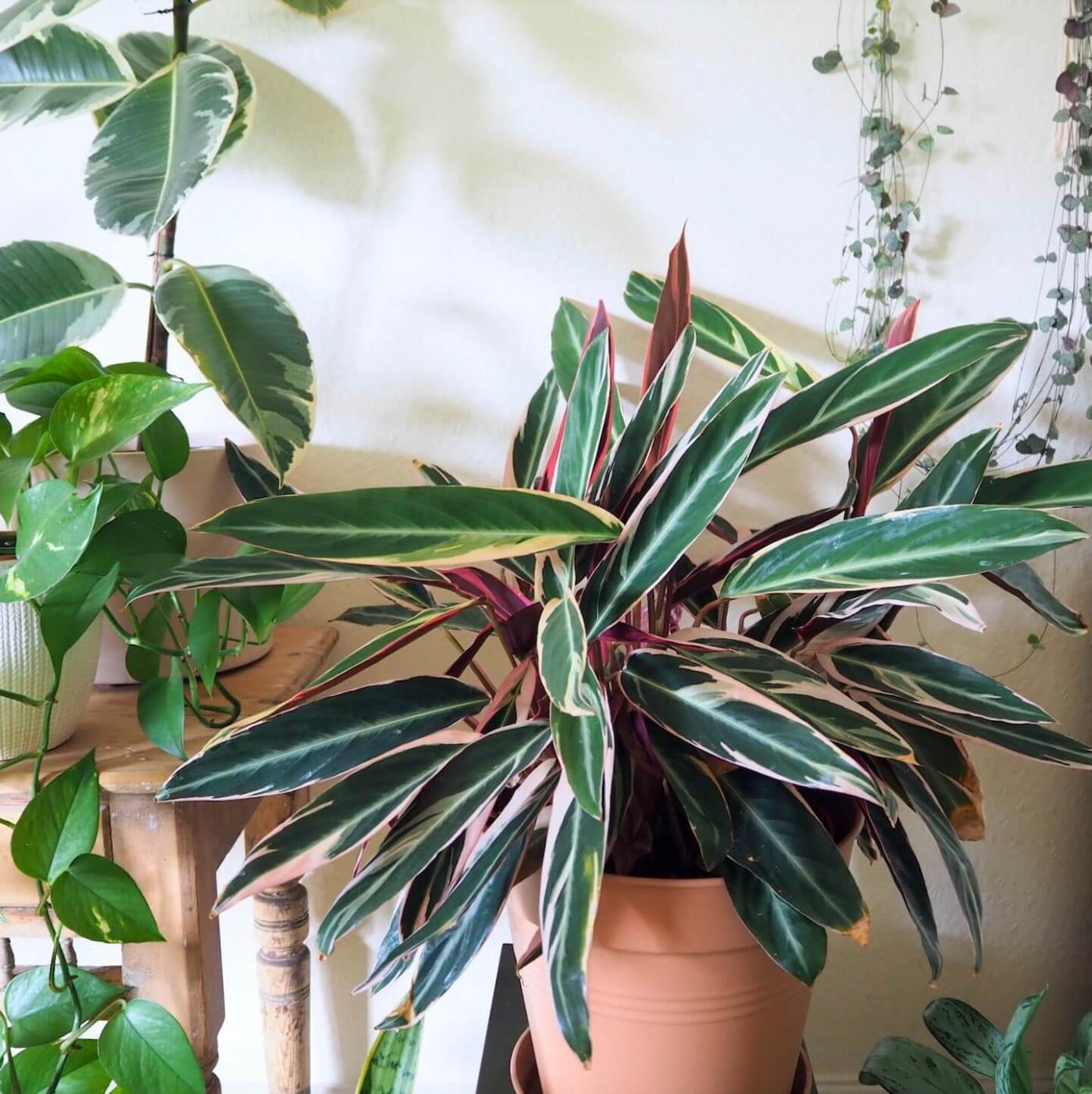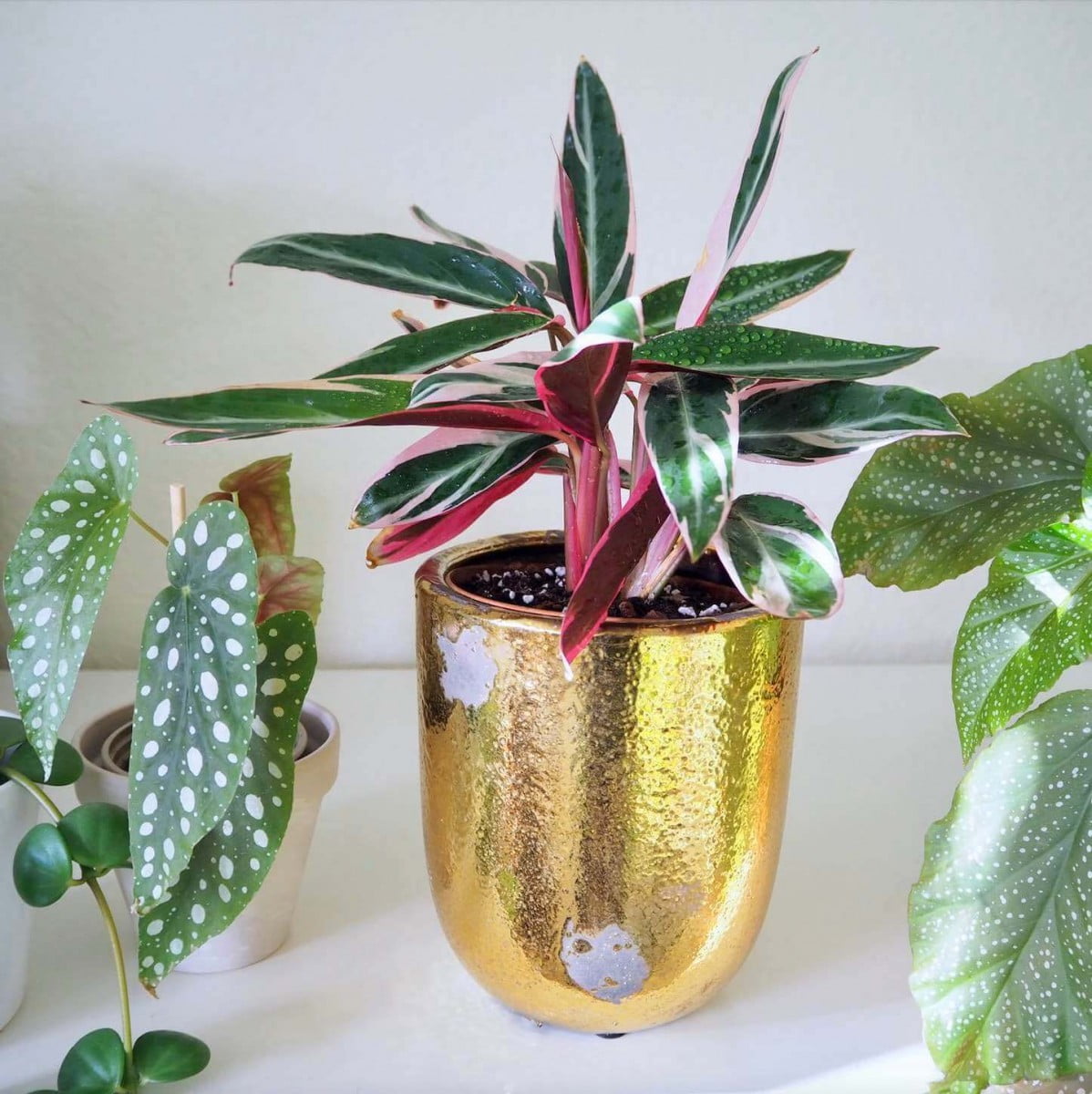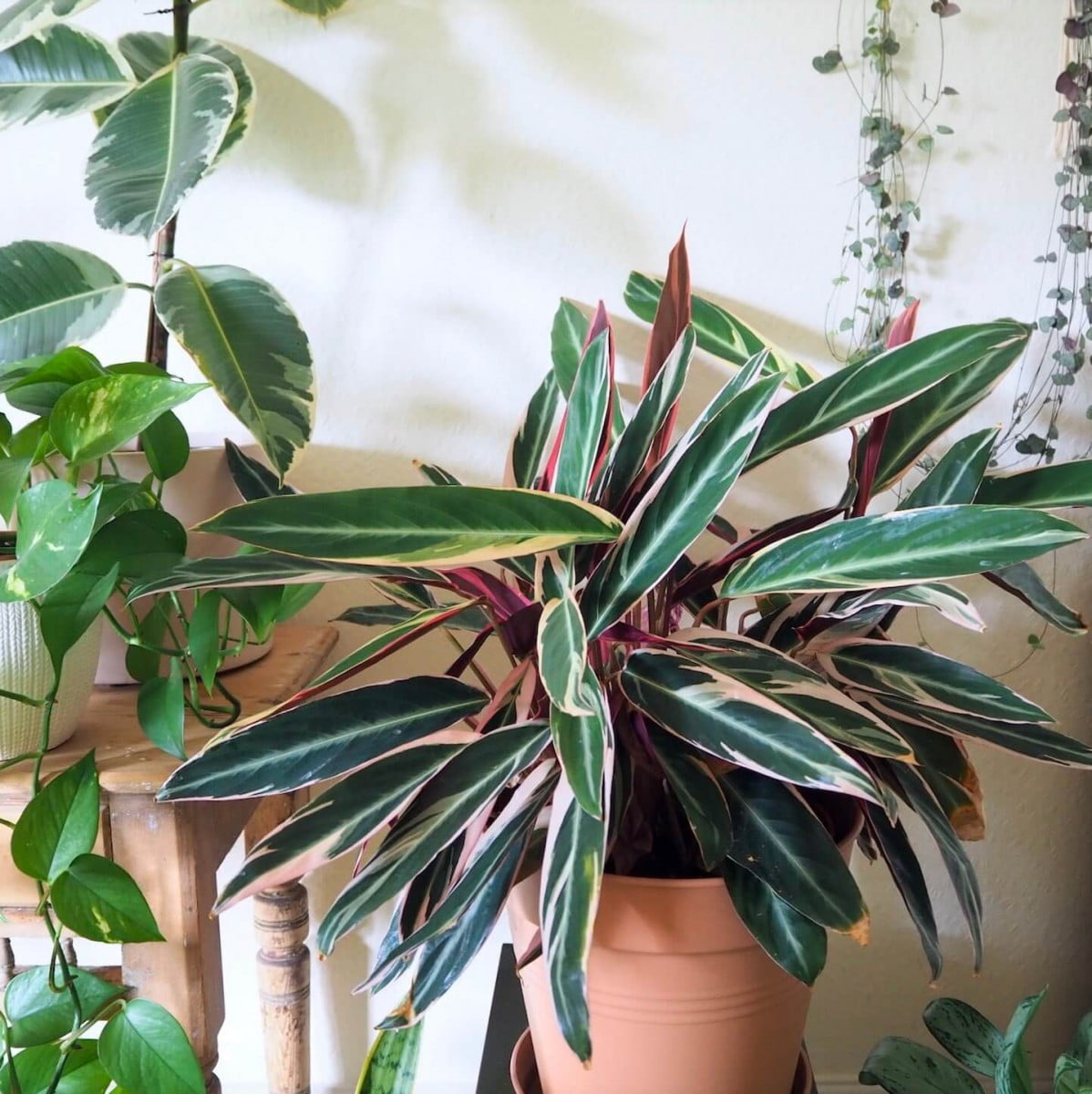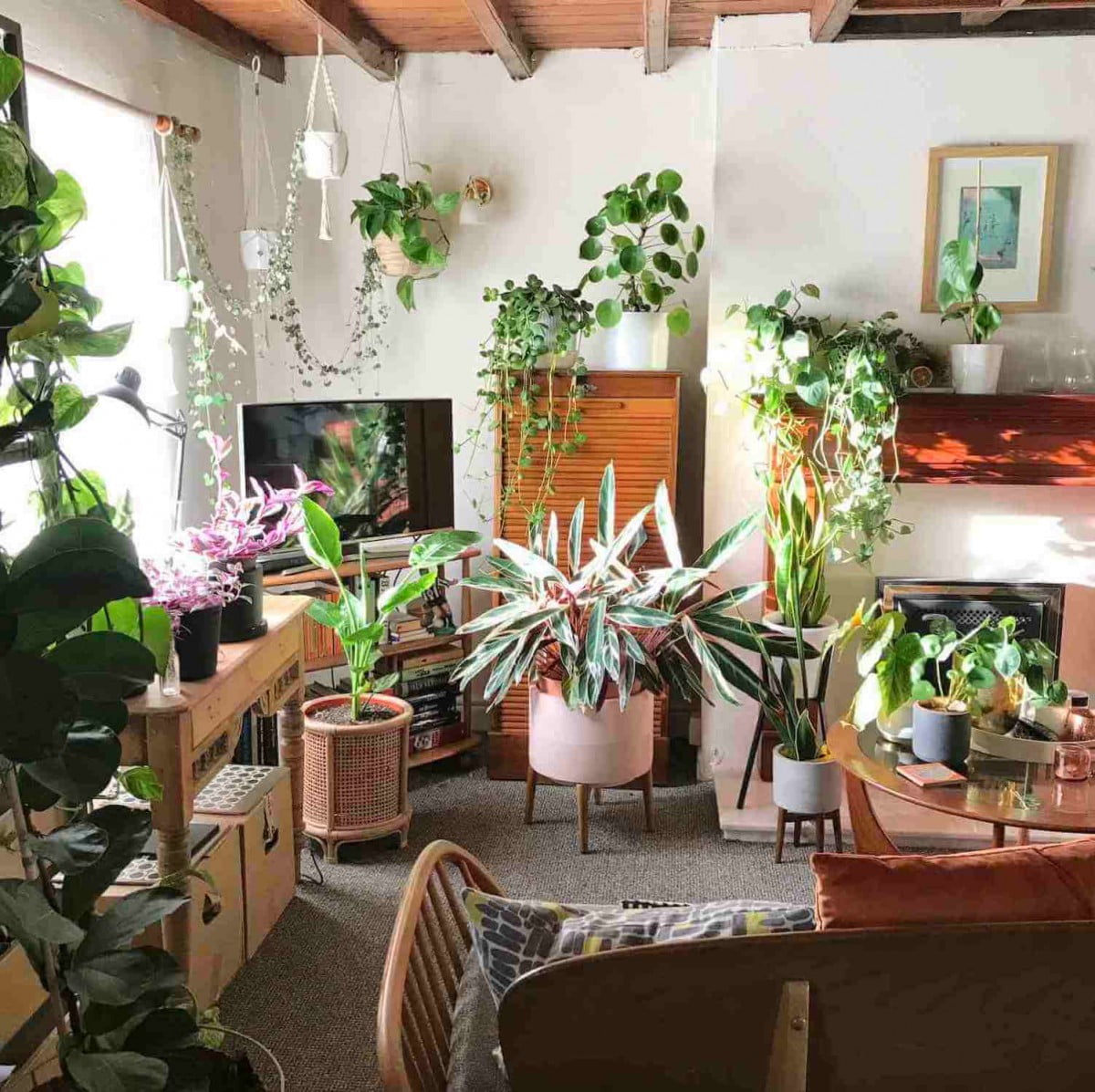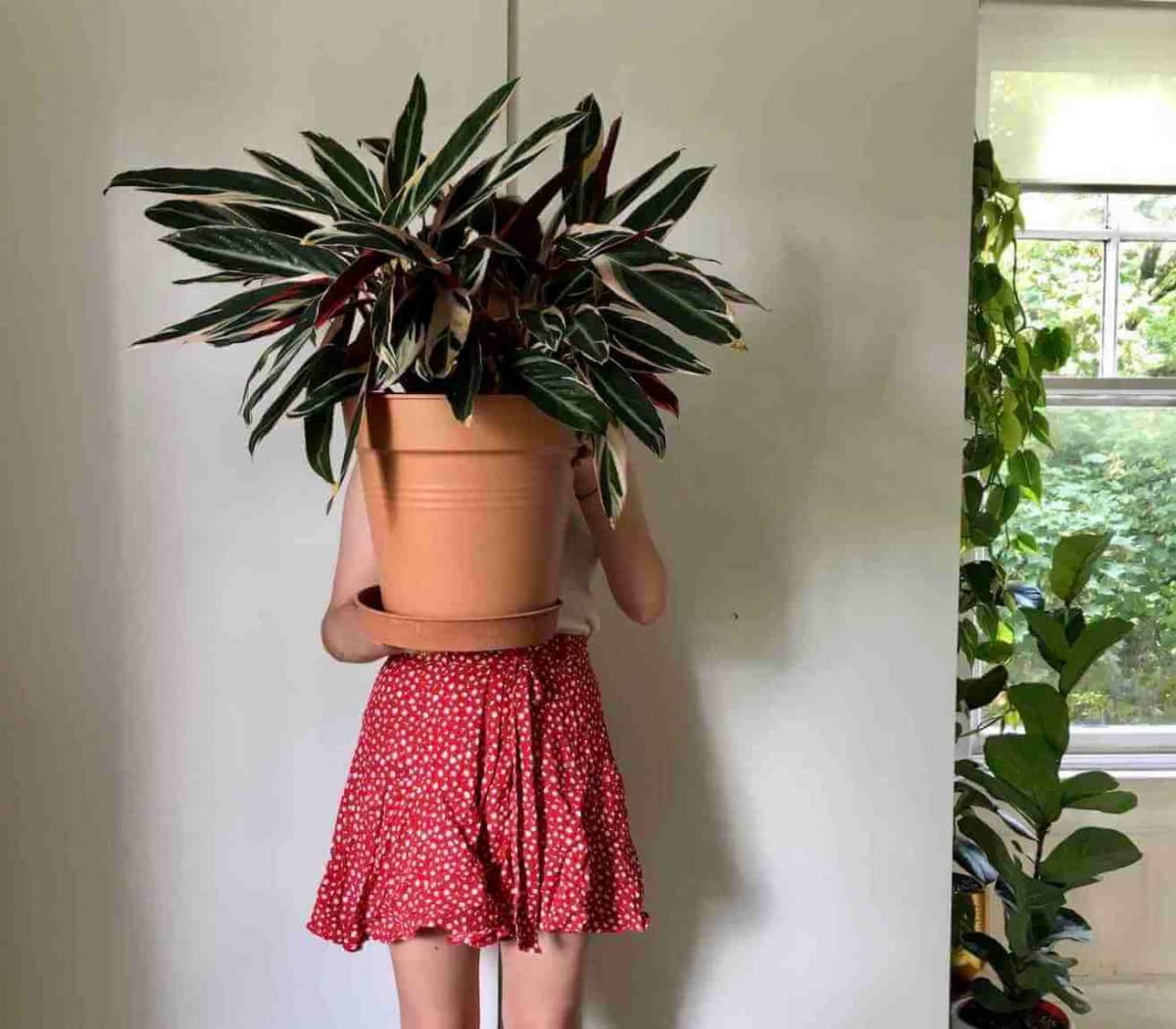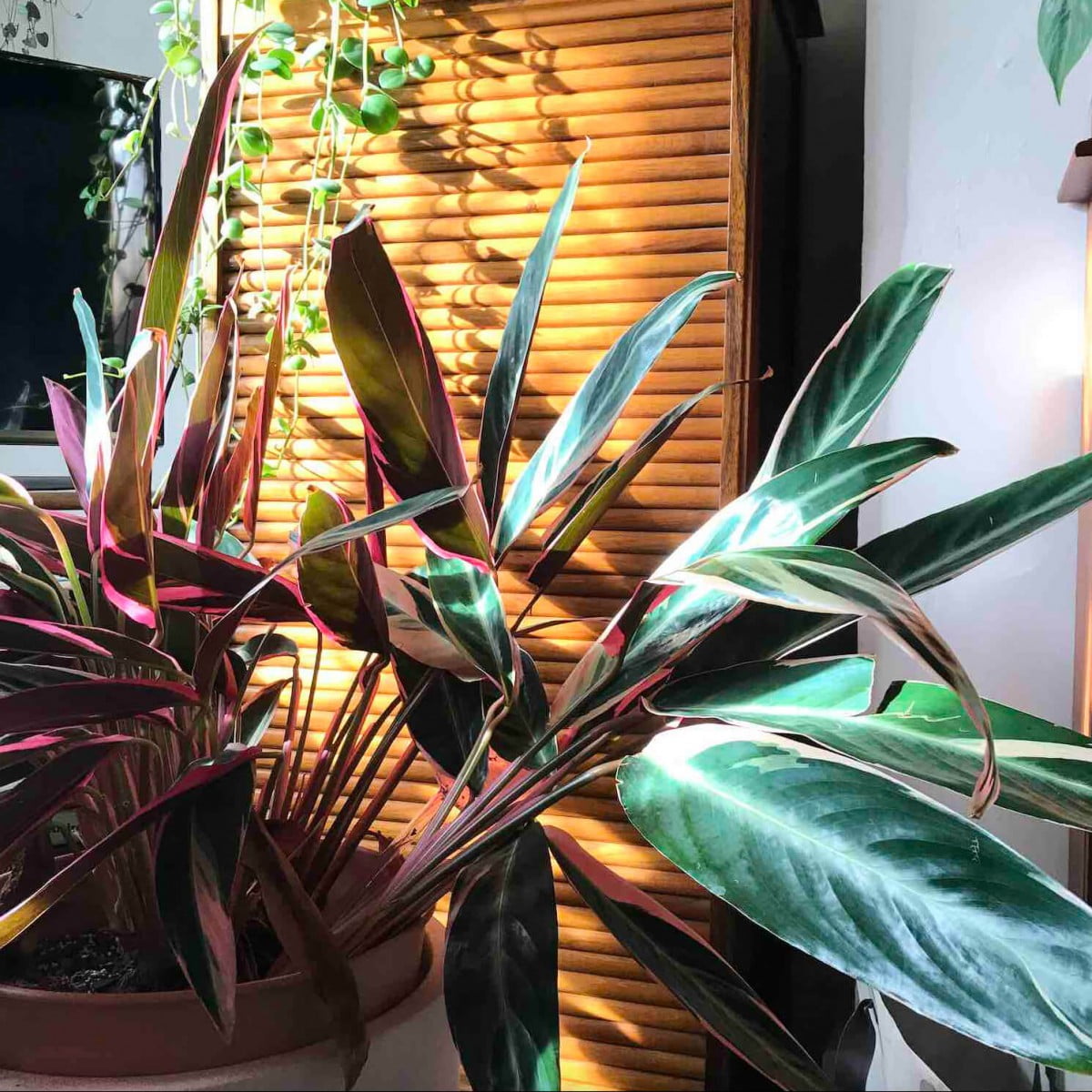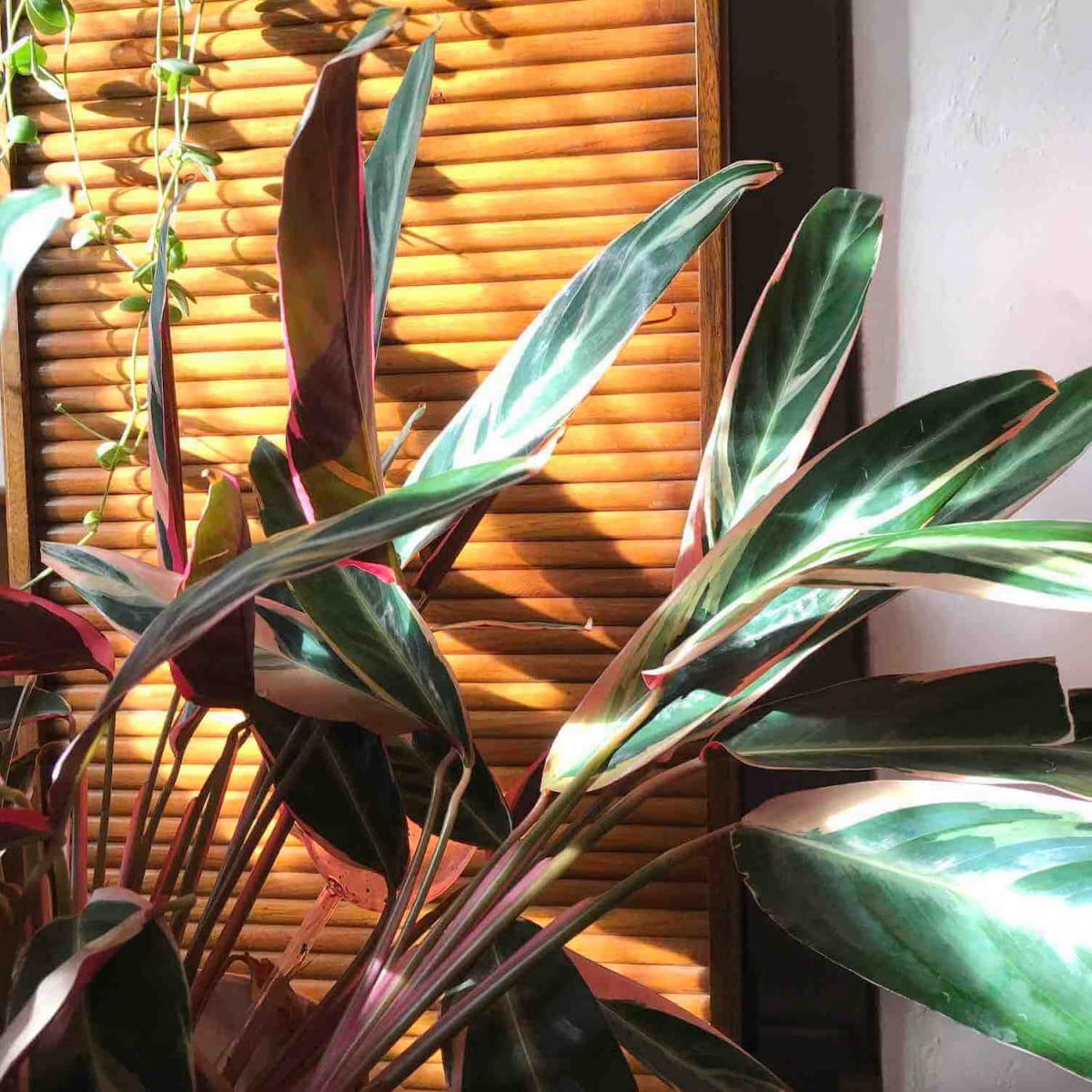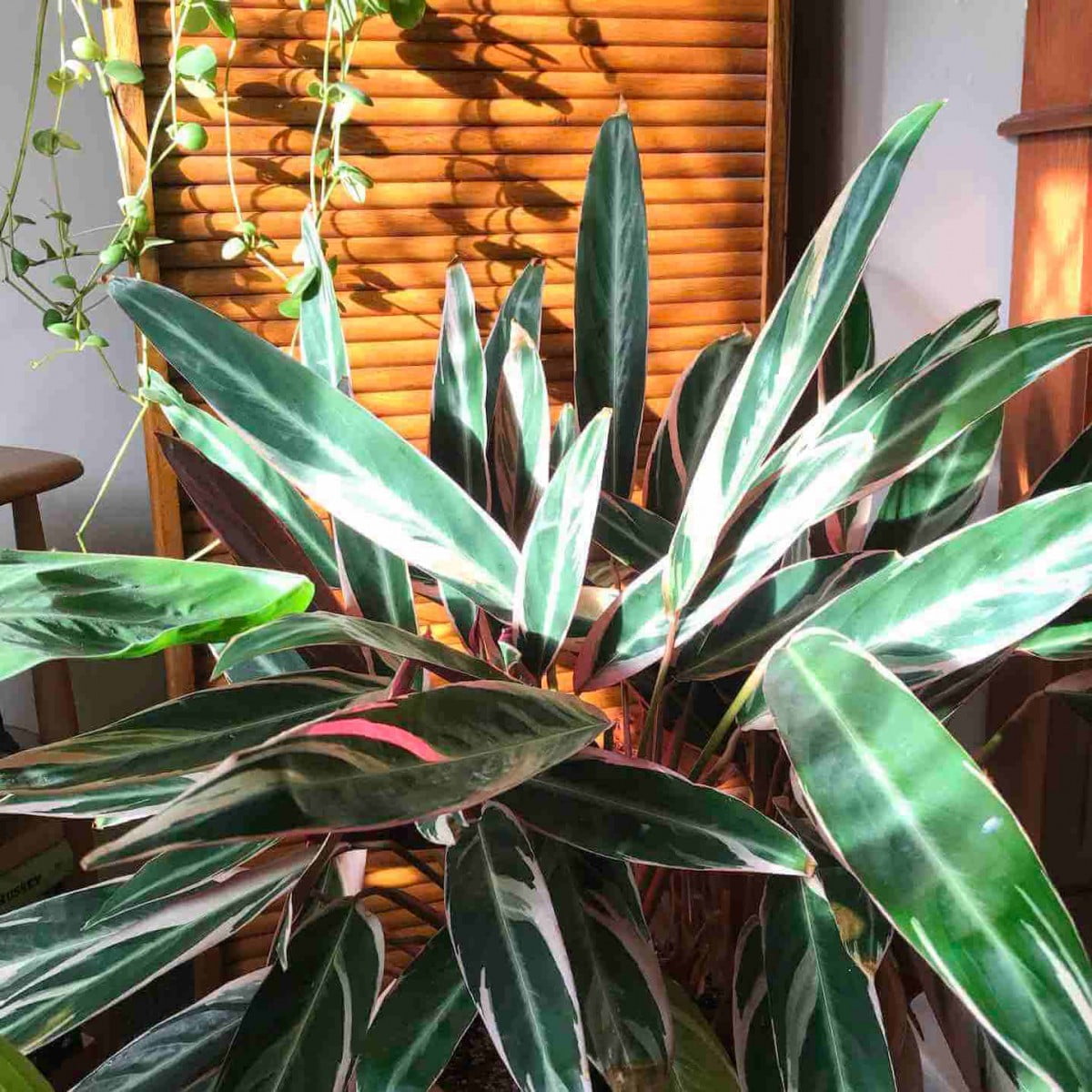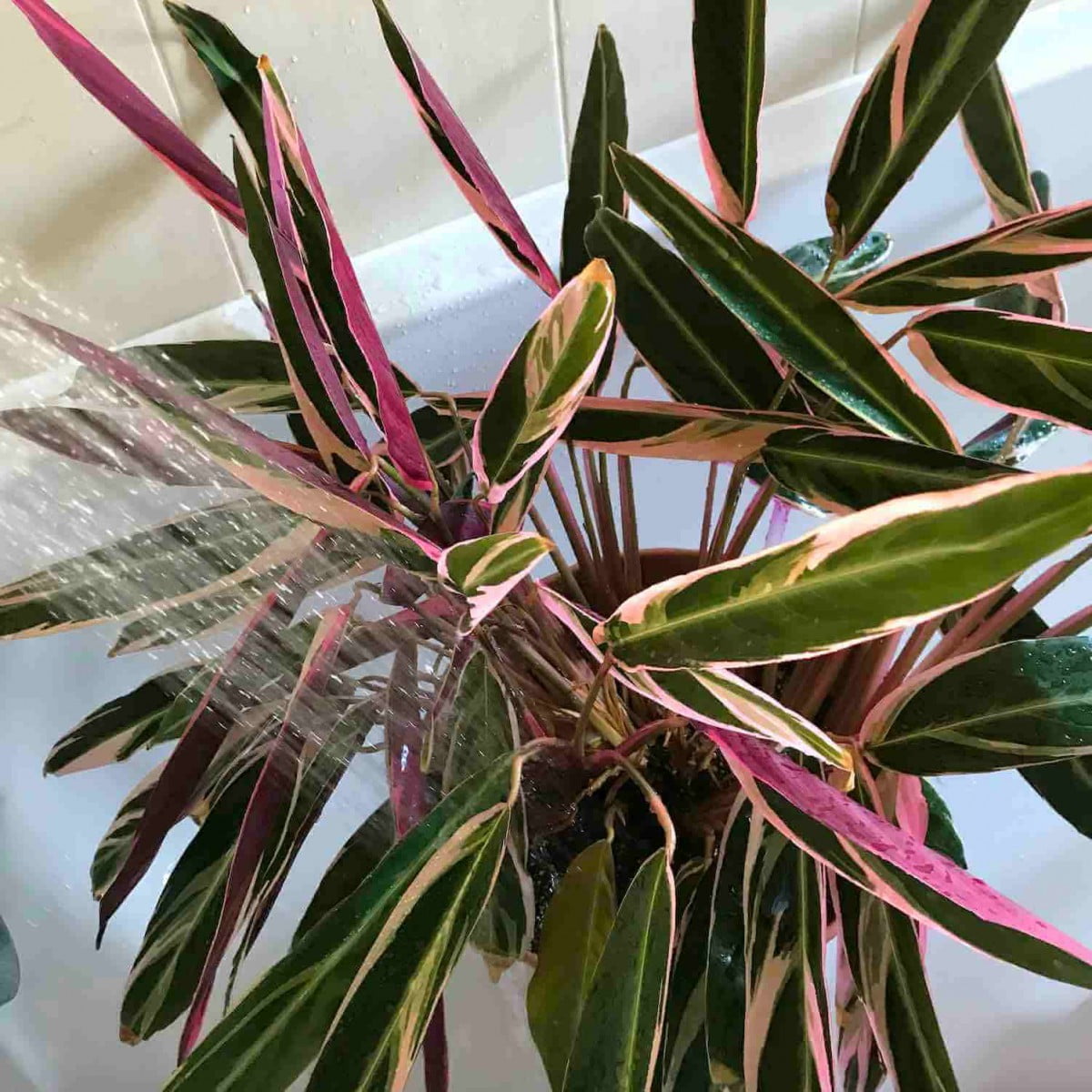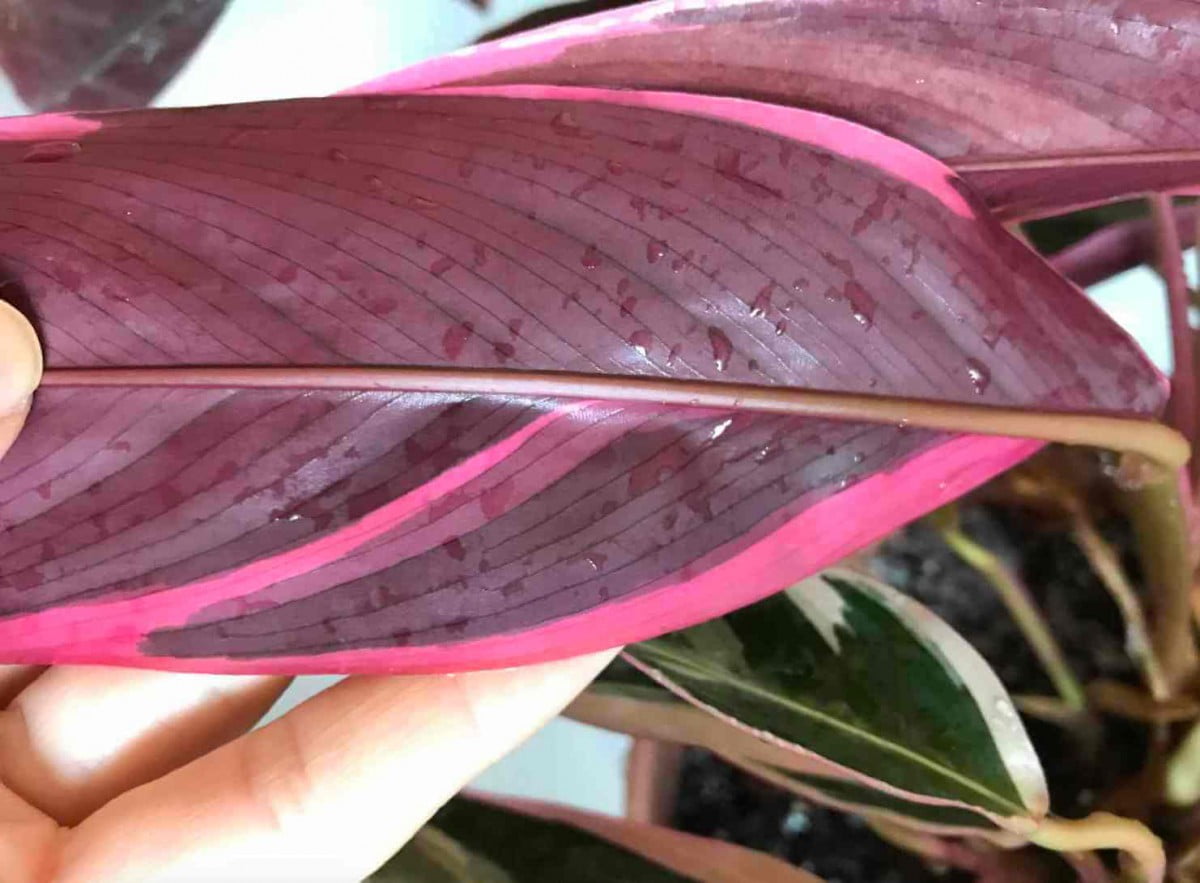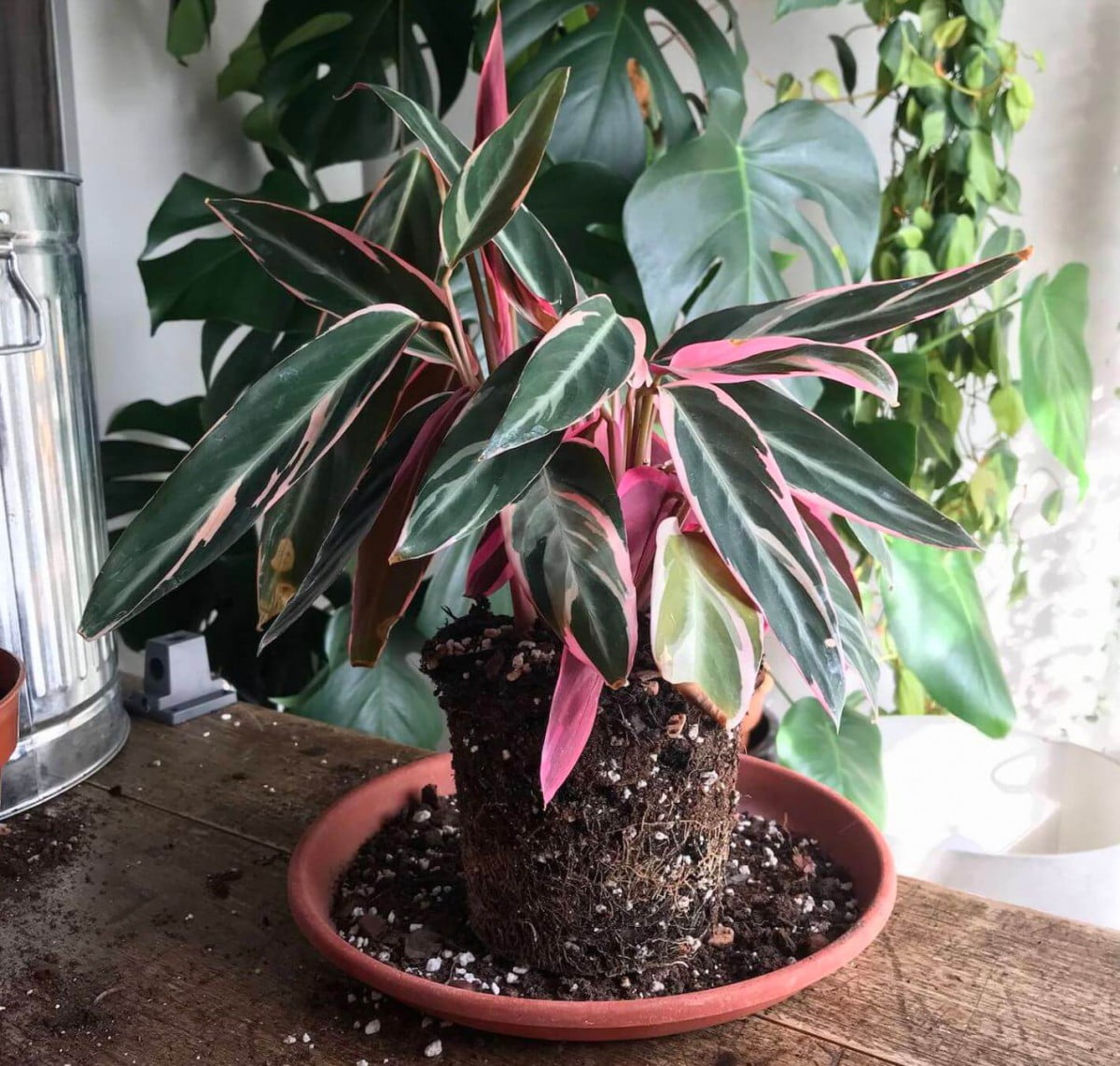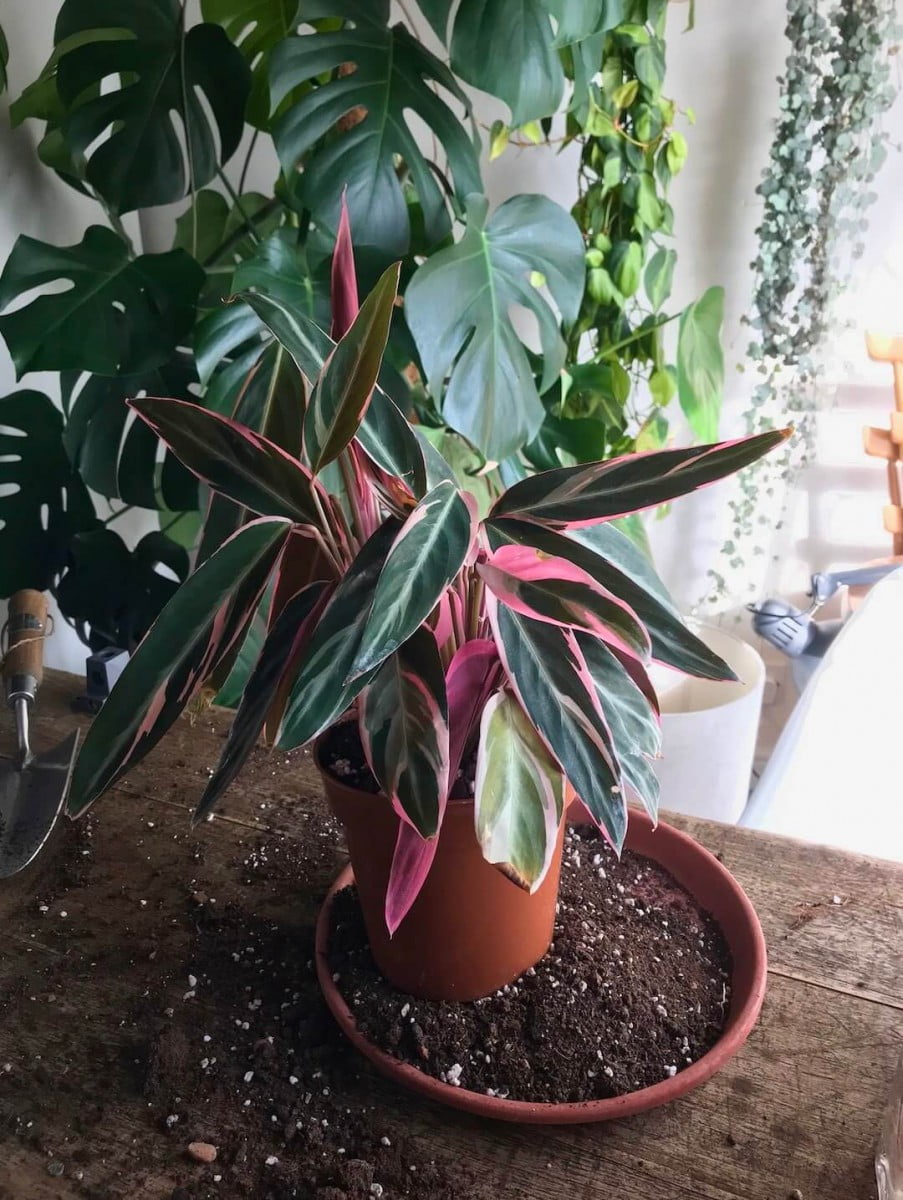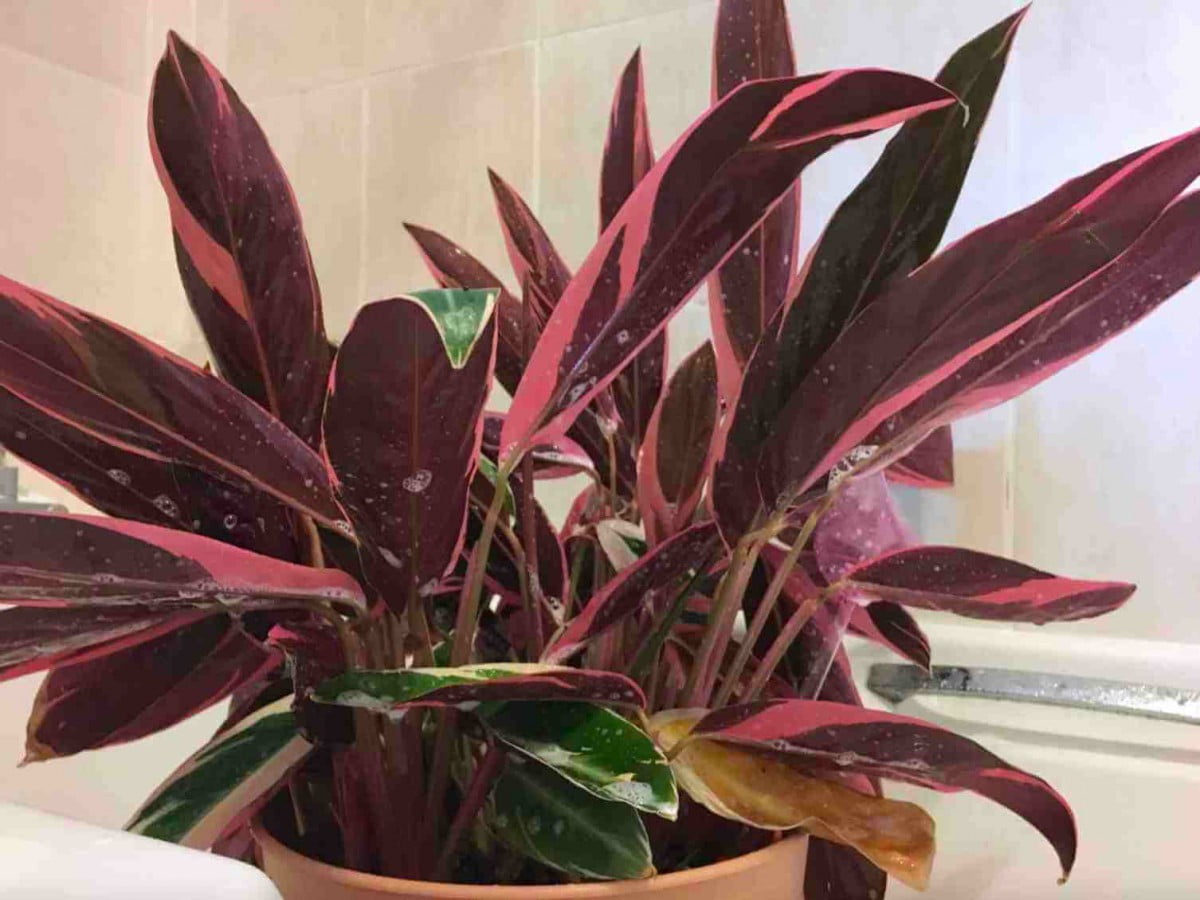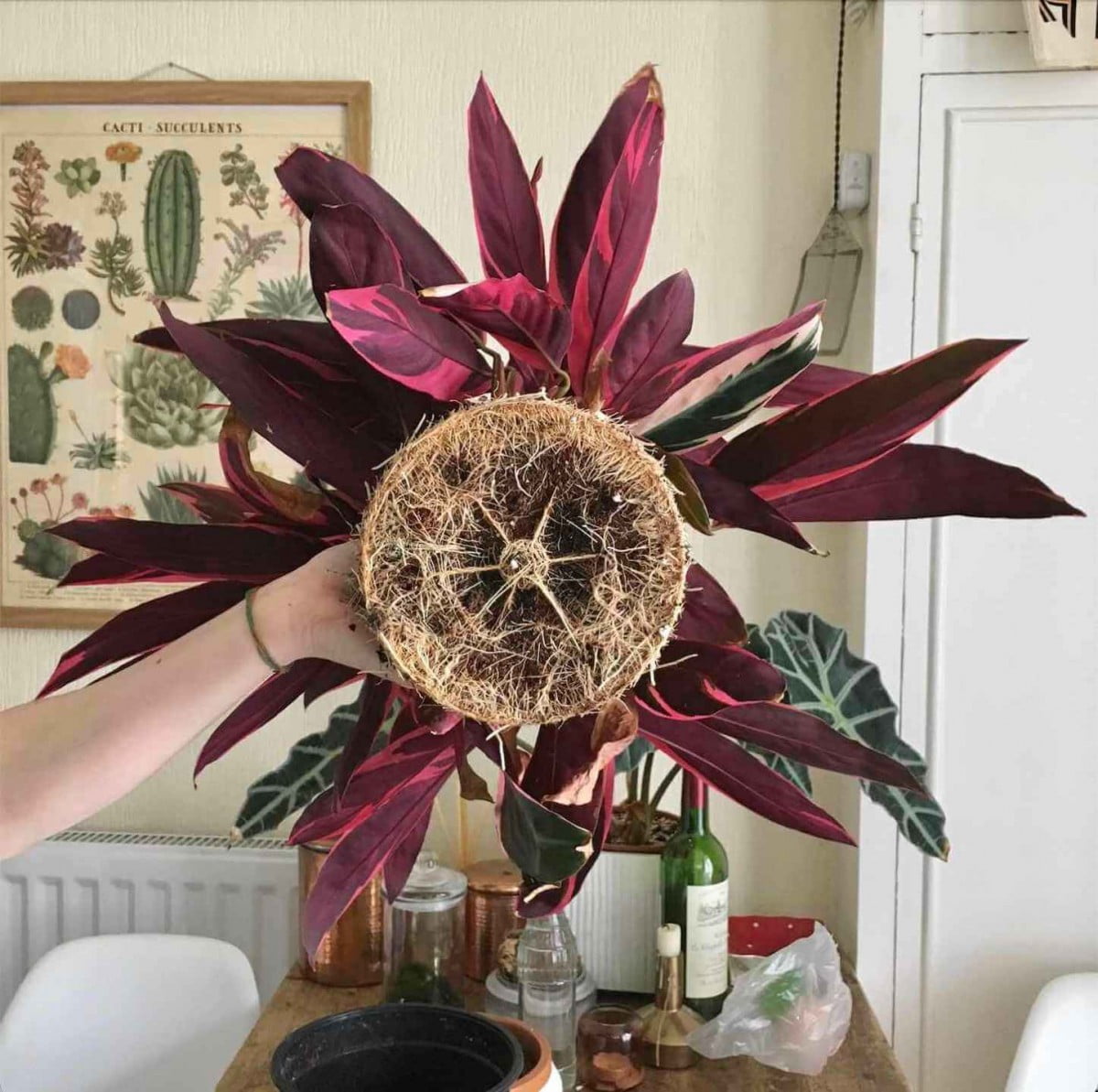Chi Stromanthe
[Wikicare] Hướng dẫn chăm sóc Stromanthe thalia triostar
Tôi không hoàn toàn chắc chắn điều gì về Stromanthe của tôi nhưng nó lại khiến tôi mỉm cười khi nhìn thấy nó – tôi nghĩ đó là sự kết hợp giữa các mảng màu trên tán lá có vẻ như làm nổi bật bất cứ căn phòng nào tôi đặt nó vào, cùng với sự phối hợp chậu trồng cây màu hồng nhạt. Ngoài ra, nó đã dài ra một chút trong những năm gần đây + có điều gì đó về hình dạng hiện tại của nó + những chiếc lá vươn ra khiến nó trông giống như đang cố gắng ôm bạn một cái thật lớn và chào đón!
Những cây này đôi khi cũng được dán nhãn là Stromanthe sanguinea triostar, Stromanthe sanguinea hoặc Calathea triostar. Chúng thuộc họ “cây cầu nguyện” Marantaceae nên họ hàng của chúng trong chi này là Calathea, Maranta + Ctenanthe – tất cả đều được biết đến với những tán lá nhiều màu sắc + đôi khi có hoa văn nổi bật. Trong băng nhóm này, tôi hiện sở hữu hai cây Stromanthe mà tôi nhân giống bằng cách cắt tỉa + một cây Maranta. Tôi đã có một vài cây Calathea trong những năm qua nhưng chúng không được biết đến vì tuổi thọ của chúng, đó là sở thích của tôi – Tôi đã có một cây Calathea Orbifolia đã hoạt động tốt (đáng ngạc nhiên) trong một vài năm nhưng nó không thích bị di chuyển + hồi phục lại nguyên trạng rất khó. Cá nhân tôi muốn giới thiệu một Maranta hoặc một Stromanthe thay vì một Ctenanthe hoặc Calathea, chúng dễ dàng hơn một chút
Bài đăng hôm nay là tất cả về cách tôi chăm sóc hai cây Stromanthe thalia triostar của mình + Tôi sẽ đề cập đến các chủ đề về:
- light
- watering
- humidity + leaf care
- fertilising
- pests
- repotting
- potting mix (+ pots)
- + propagation
LIGHT
These colourful leaves are much happier out of direct light + prefer a medium-light position in your home. That translates as fairly bright, indirect light + I’m in the northern hemisphere for reference. For me, that is around 2 metres away from a south-eastern exposure behind a net. This filters the light + protects the plant from anything too harsh or intense which is the main reason that you might experience the foliage going crispy or looking a little washed out. My plant gets an hour or so of morning light which it seems to like! The leaves are paper-like to the touch which indicates their sensitivity to very bright light which will likely result in scorching — thicker foliage like that of a Ficus elastica for example, is much more robust + resilient to strong light. In my previous apartment, I kept my planter around 4 metres away from a South facing window at the furthest point away from a bay window, right at the back of my room.
Bear in mind that these are the conditions that are personal to my current environment + are used as a guide for you to compare with your own home. It’s important to also remember that windows can be pretty different in size + if you live in a built up area, with other buildings close by, or if there are obstacles like trees outside, this all has an impact on the intensity of light.
Depending on where you choose to keep your Stromanthe, you can keep growth balanced + more globe like in form by rotating your plant every week or so. I don’t do this because I have always displayed it against a wall or piece of furniture + it takes up slightly less floor space this way!
WATERING
Getting watering right with Stromanthe is often the main cause of plant struggle because it’s really common to be an over enthusiastic plant parent + water too often at first (the generic care information often says keep compost moist at all times), followed by compensatory under watering! I write this from experience of course + I will admit I am sometimes not as consistent as I would like to be with my houseplant watering… but it is better to under water than to overwater! A hygrometer is a useful bit of kit I wouldn’t be without + one I would recommend if you struggle to get houseplant watering right. Stromanthe do prefer to have their potting mix at a consistent moisture but that doesn’t mean too much water all the time. It hates drying out completely + the leaves might develop markings on them + curl inwards, plus the tips of the foliage might also crisp in protest too. So really try to avoid that if you can! If you look carefully in some of my photos, you might spot a pink glass globe — this is a self watering spike (similar clear ones here or a colourful option here) which helps to keep the potting mix at a decent level of moisture, particularly between waterings. Due to these care requirements, if you are interested in self-watering planters, prayer plants would make a good candidate.
In terms of watering, remember that tepid (room temperature) water is always best for your houseplants as anything too cold can shock them. Stromanthe are quite sensitive to tap water + if you live in an area with hard water like me, you might notice some marks on the leaves (these can be wiped away with a soft cloth). If possible, using rain water or filtered water can help to prevent some brown crisping at the leaf edges.
HUMIDITY + LEAF CARE
The question of humidity for Stromanthe plants is pivotal to their overall happiness + growth. These plants do prefer a more humid environment in your home, which makes them a great choice for a bathroom or kitchen plant in warm, humid atmospheres. But as I’ve always had dark + cold bathrooms, I keep my Stromanthe in my living space where it has coped considerably well for the last 4+ years, huddled up with some other plants which can help a little.
In all locations, be sure to avoid heaters or draughts because these plants really dislike temperature fluctuations. In the Summer, the humidity is around 60% + in Winter is more like 70%, but that’s more to do with the age + condition of the property + not because of any supplemental humidity! A humidifier doesn’t suit my environment because I collect vintage furniture which does not enjoy increased humidities, but if you live in a space that works, adding in humidity in this way can be a great option for tropical plants. You’ll often find growth is faster + foliage is larger — lovely! But don’t feel pressured to invest because you’ve seen humidifiers on instagram — do what works for you + your home.
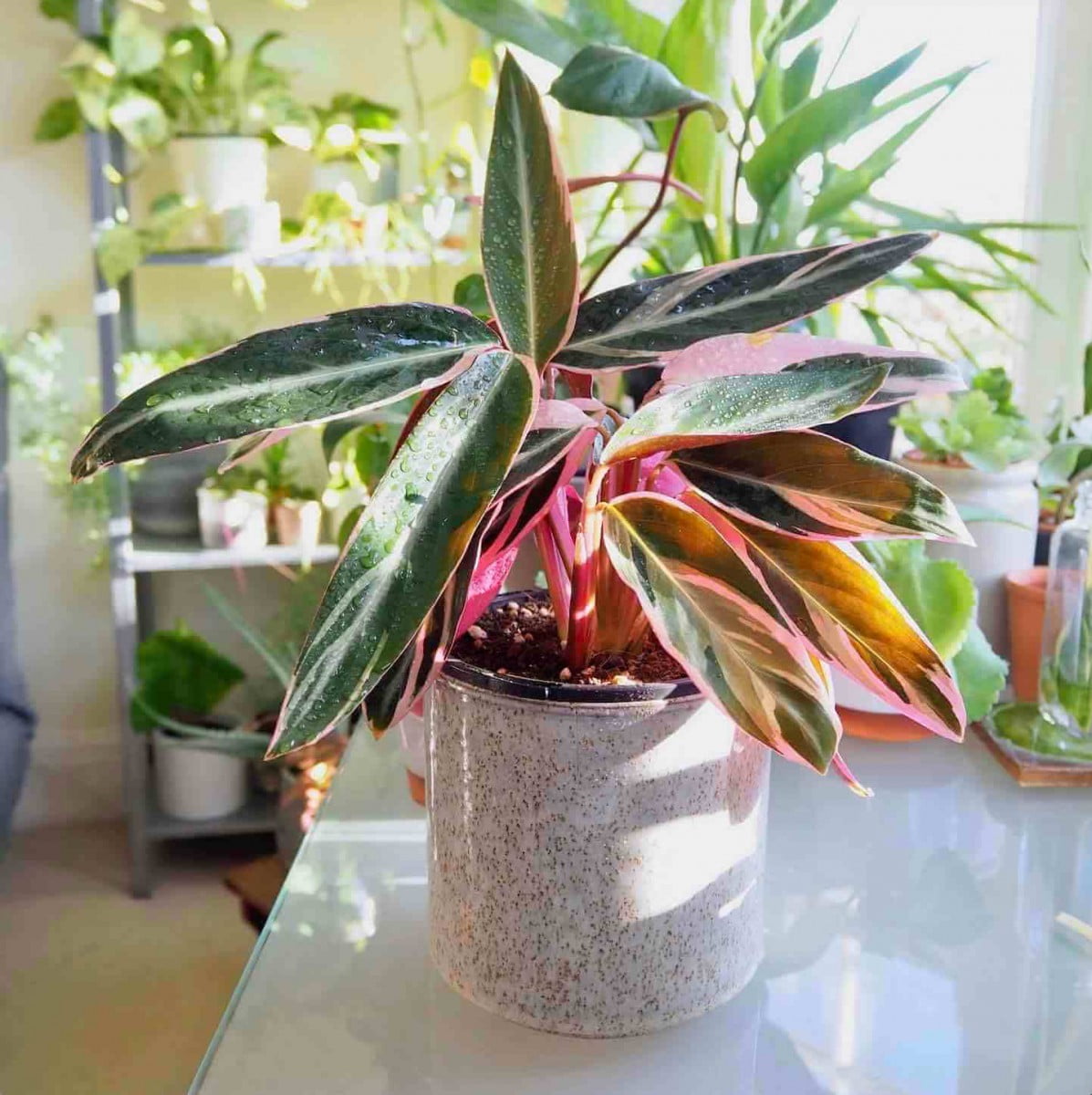
Another way to keep the surrounding humidity up is to top your pot with Sphagnum moss — it can help conserve moisture levels which will reduce watering frequency + create an increase in localised humidity. At the bottom of my pot (underneath my drip tray), I have an inch or two of pebbles that lifts the pot + tray up in the planter + I will occasionally add some water to this when it’s hot, which lets the moisture evaporate around the foliage. But this is more a practical styling thing than an effective way to raise humidity, as the results are only temporary. Getting into a groove with understanding the intrinsic relation between watering balance + potting mix is the best way to approach this concern. But more on this later.
Every 6 weeks or so I will give myself a workout as I carry the planter upstairs to the shower for a thorough clean! If you are showering your plants too, be mindful of temperature + check before potentially shocking your plants with water that is too hot or too cold — I have also accidentally done this before so learn from my mistakes here…! When cleaning, don’t forget about the undersides of the leaves + this is also a good time to check for pests, particularly along the mid-rib as you can see in the photo below right…pests just love it here.
FERTILISING
My Stromanthe is one of those plants in my collection that really doesn’t cope well with excessive fertilising, so my feeding regime is pretty pared back + easy going. During the Spring + Summer (between March-October) I fertilise once to twice a month with a balanced liquid houseplant fertiliser at half the recommended dilution rate + if it has been particularly warm, I always give my pot a little bit of a water before feeding if things are looking on the dry side to help prevent fertiliser burn. If your climate is quite different to mine + you find your plants grow year-round, then more regular fertilising is fine. It’s very cold where I live during Winter + with the harsh decrease in temperatures, I’m getting used to my houseplants stopping growing altogether. The easiest way to judge whether or not to feed is if your plant has new leaves growing. On more mature specimens, some parts of the plant can die back a little bit, so don’t be too alarmed if this happens, it’s just a natural life cycle of these plants. During their rest period, I stop feeding until I notice signs of active growth resuming.
PESTS
Stromanthe can really become a pest magnet if they are not being cared for adequately over time. So to prevent the headache of potential pest pressures, try to take note of what we have discussed in the post so far — keep a consistency with your watering routine + aim to provide a humid position if you can. Keep your plant free from dust, paying particular attention to the undersides of the foliage + don’t be afraid to use a cloth to work along this area to give it a thorough clean. Regular cleaning is a good pest deterrent, particularly in high traffic areas where dust can build up more quickly.
Alternatively, if you have any plants that are especially dusty which have reasonably strong leaves, you can also use masking tape if you want to get all the dust off the underside of the foliage around the mid-rib of the leaf! This is a method that can be used if you are unsure whether you are dealing with mealy bugs, scale or spider mites which can leave markings or a very fine webbing around these areas + if left unnoticed, can also get dust caught in them. This can sometimes be how these problems get noticed. I wouldn’t recommend this as a regular cleaning method, as it is quite fiddly but it’s something to be aware of in relation to pests.
Bear in mind that brighter light locations can also exacerbate any lurking pest problems + if you have a recovering plant, always keep in a shaded spot. The main things Stromanthe hate are low humidities + dry, bright conditions which can cause an attack of red spider mite, thrips or mealy bugs. As I said above, pests love the underside of the mid-rib of the leaf, so carry out regular checks here when caring for this plant. Mealy bugs will often congregate around where the multiple stems form into clumps at soil level. I choose to prune my plant annually to help keep this area less compact + to allow air flow around the base of my more mature plant. I’ll go into this in more detail when I discuss Stromanthe propagation below.
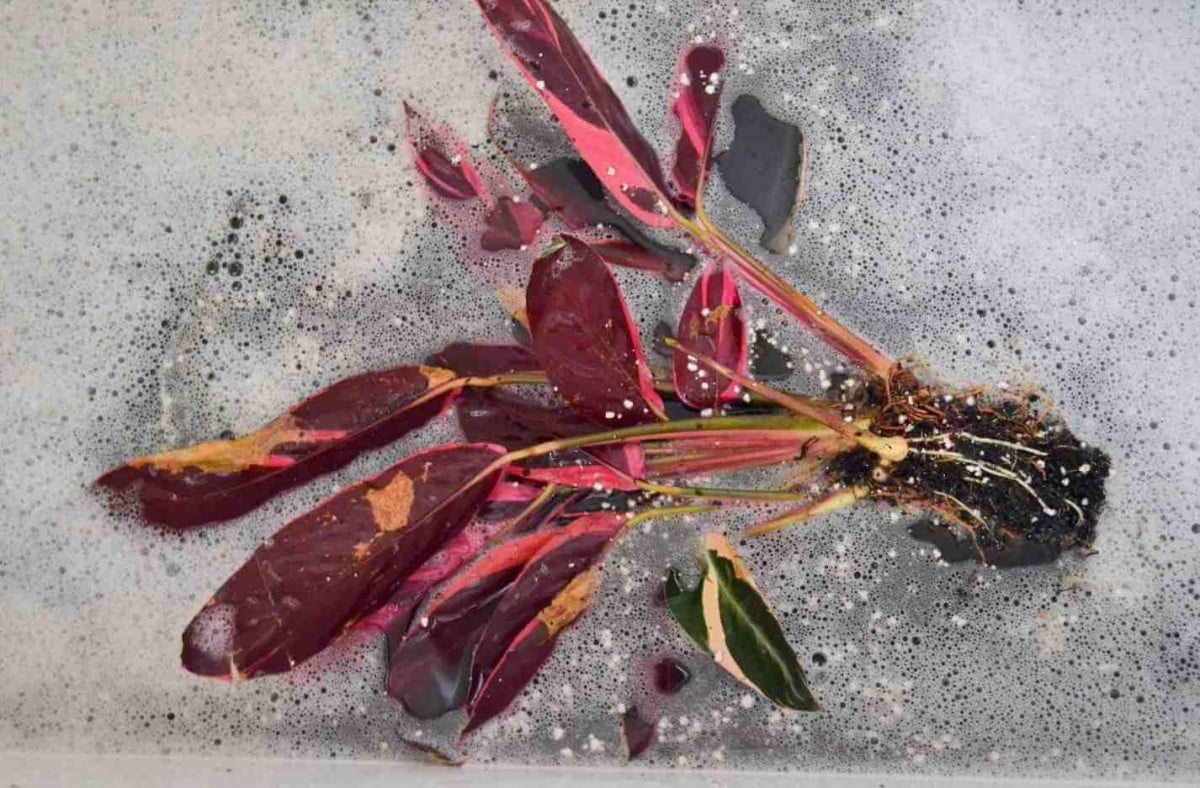
There are a number of ways to deal with pests but the last time I had a slight problem with my Stromanthe I gave it a castille solution spray + bath — roots + all — before showering down. It’s messy but it did the job! After any treatment, I like to use SB plant invigorator either as a ready to use spray, or you can also get a concentrated bottle to dilute into a spray bottle yourself, but be extra careful on more delicate foliage + always test a part of the plant first. I spray the front + backs of the foliage as some extra post-treatment care, but be careful to keep out of direct light as the leaves will be more sensitive after any pest treatment. I’ve also used a neem oil solution which is also very effective for something more widespread, or if it’s something very minor, a Q-tip dipped in rubbing alcohol works too. When I’ve had a pest issue with my plant, I always isolate it for a number of weeks in my kitchen/quarantine zone + monitor before reintroducing near my other plants. If you discover a pest issue, it’s always best to carry out a thorough check of any plants that were located nearby, or any plants that are generally more sensitive to an attack.
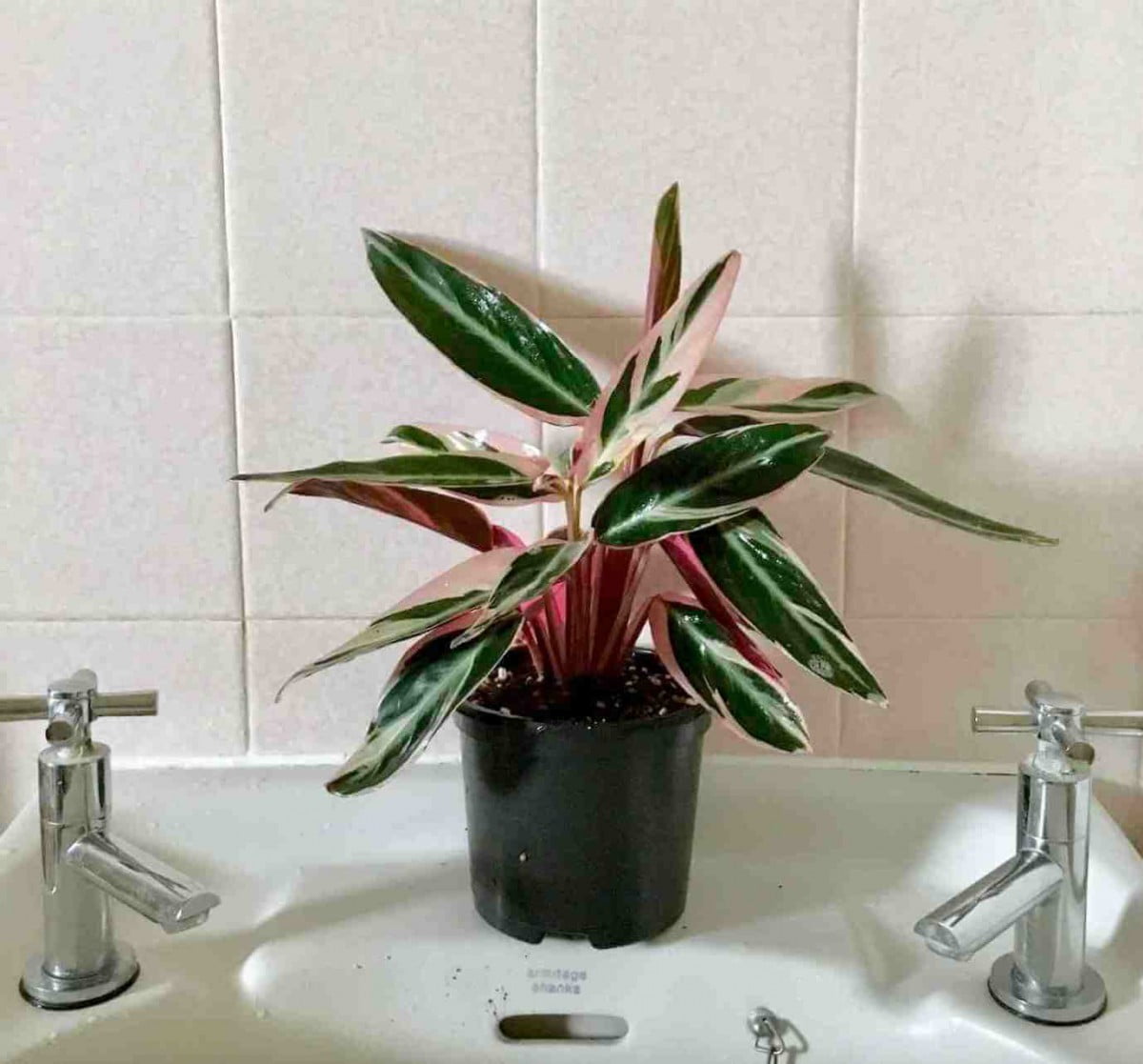 REPOTTING
REPOTTING
Prayer plants are pretty slow growing so seldom require frequent repotting, unless your plant is in a warm, humid, tropical environment. A new pot one size bigger than the previous one every 12-24 months is usually absolutely fine + during repotting you’ll want to prune back any dried roots or stems too with a sterile snips. When you are planning to re-pot, it’s good practice to water in the few days before repotting because manipulating a very dry plant can sometimes cause transplant shock. As you remove the Stromanthe from the pot, be gentle with the roots as you loosen them with your hands, shaking off any old potting mix. Despite not needing repotting often, these plants will really benefit from new potting mix when they are repotted.
I tend to do my repotting in batches so will make up a container of potting mix that suits the plants in question. Remember to check wether or not your compost has any slow release fertiliser in it, so that you aren’t double feeding — Stromanthe really dislike this!
POTTING MIX
In terms of potting mix, I like to use my standard mix I like to make up of houseplant compost, orchid bark, horticultural grit + some perlite as the base, but in this instance, I’ll add in some extra houseplant compost to allow the potting mix to hold onto moisture for longer. In addition, I will add in some sphagnum moss if I have it + I also like to use it as a pot topper for some extra moisture retention + to keep the soil temperature up too — this is also a good tip if you are prone to under-watering! If you are using this substrate please make sure you buy your Sphagnum from a reputable source.
A NOTE ON POTS:
The type of pot you choose to use is also intrinsically connected to your mix + watering requirements. For me, I prefer to use nursery pots with my prayer plants + as with other humidity loving houseplants, I find they dry out far too quickly in terracotta. Terracotta is much more porous + will wick the moisture away from the plant. If you want to use terracotta for display or plant styling reasons, you can always use the terracotta as a cover (cache) pot.
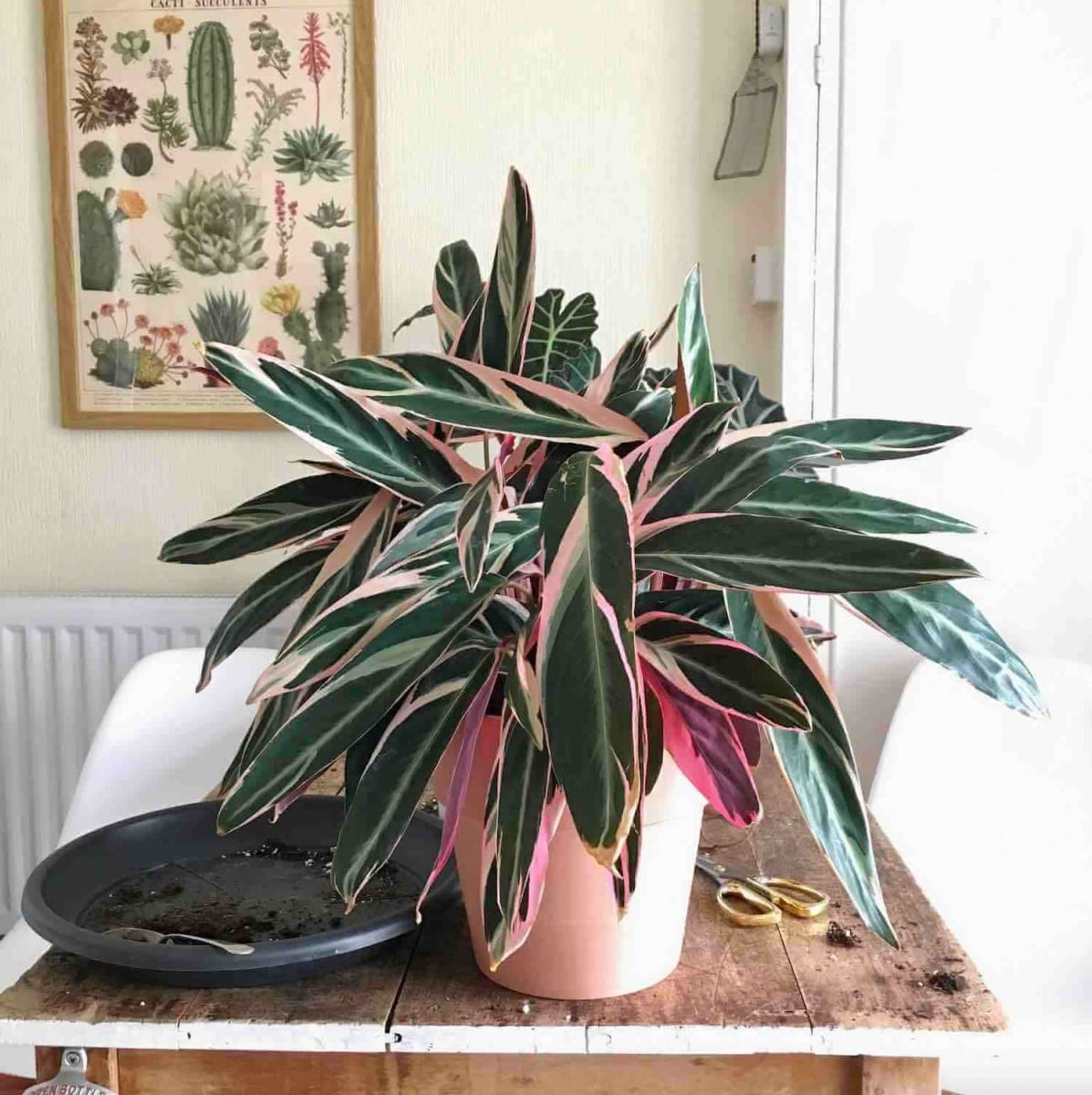 PROPAGATION
PROPAGATION
One reason you might find yourself considering propagating your Stromanthe thalia triostar is that the growth has become very dense. As I mentioned earlier, pruning or dividing up your plant in this way can help solve the problem of an overcrowded pot, which can sometimes invite pest pressures. This was the situation with my larger plant you’ve seen in this post + when I repotted it, I also took a small division as my first experiment in Stromanthe propagation. When propagating by division, it helps to choose a part of the plant that is healthy + that also has some roots — this makes the transition smoother + less stressful for your plant as it adapts to its new home/pot. I’ll be doing this again this Spring with my larger plant as it’s really flourished this year + I might try to make a few divisions to add some colour around my home!
